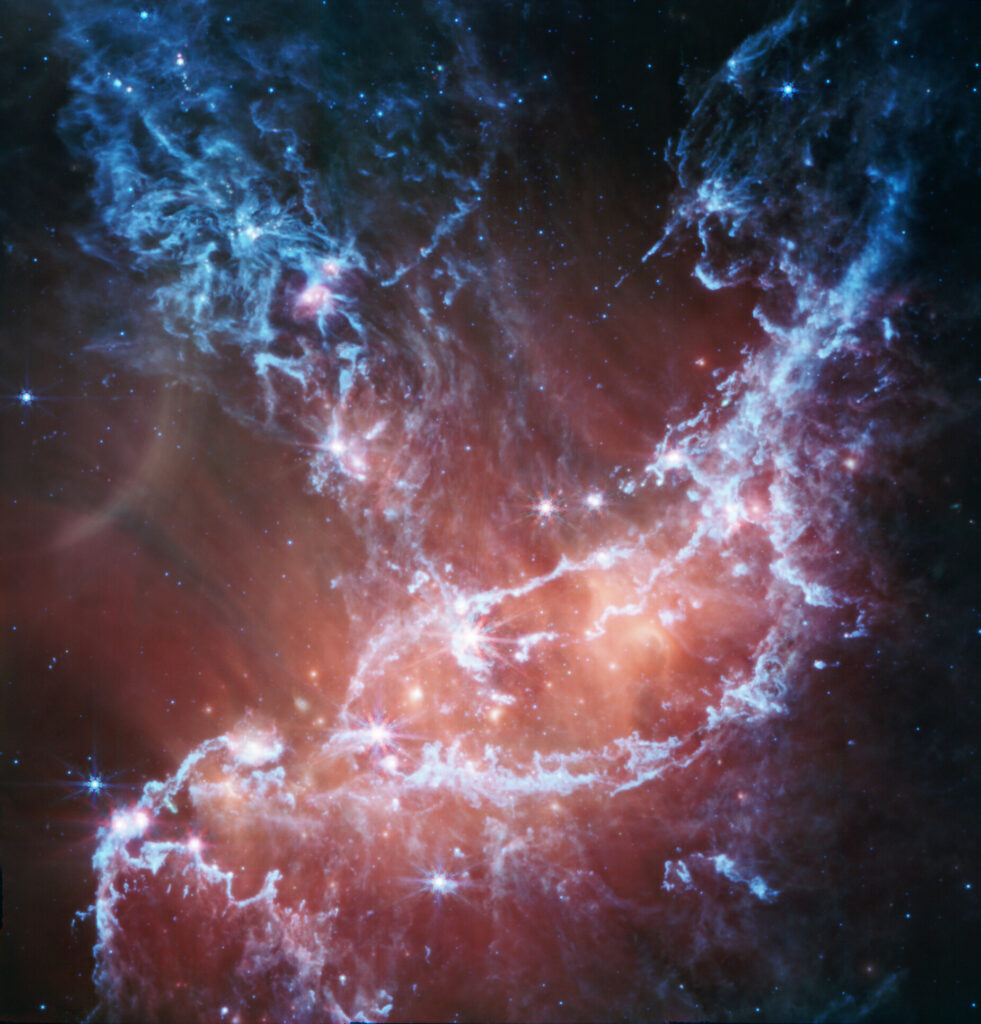Astronomers working with the James Webb Telescope (JWST) published a new, colorful image. The emission nebula NGC 346 can be seen on it.

NGC 346 is located in the Small Magellanic Cloud, a dwarf galaxy that is a companion of ours. It is more primitive than the Milky Way, because it contains fewer heavy elements that are formed in stars as a result of nuclear fusion and supernova explosions.
This is one of the main reasons why scientists have focused their attention on NGC 346. In the distant past, when our Universe was noticeably younger, most of the “stellar maternity hospitals” resembled this nebula. The main difference is that ancient galaxies had thousands of similar regions of active star formation.
Since cosmic dust is formed from heavy elements such as silicon and oxygen, scientists expected NGC 346 to be poor in them. However, the new image obtained by JWST in the mid-infrared range, as well as the previous image taken by a near-infrared camera, showed the presence of a large amount of dust in this region.
You can see a lot of characteristic blue tendrils in the JWST photo. They consist of a material including silicates and soot molecules known as polycyclic aromatic hydrocarbons. The more diffuse red radiation comes from warm dust heated by the brightest and most massive stars at the center of NGC 346. In total, the research team found 1001 pinpoint sources of light. Most of them are young stars still in their dust cocoons.
According to https://esawebb.org
Follow us on Twitter to get the most interesting space news in time
https://twitter.com/ust_magazine
